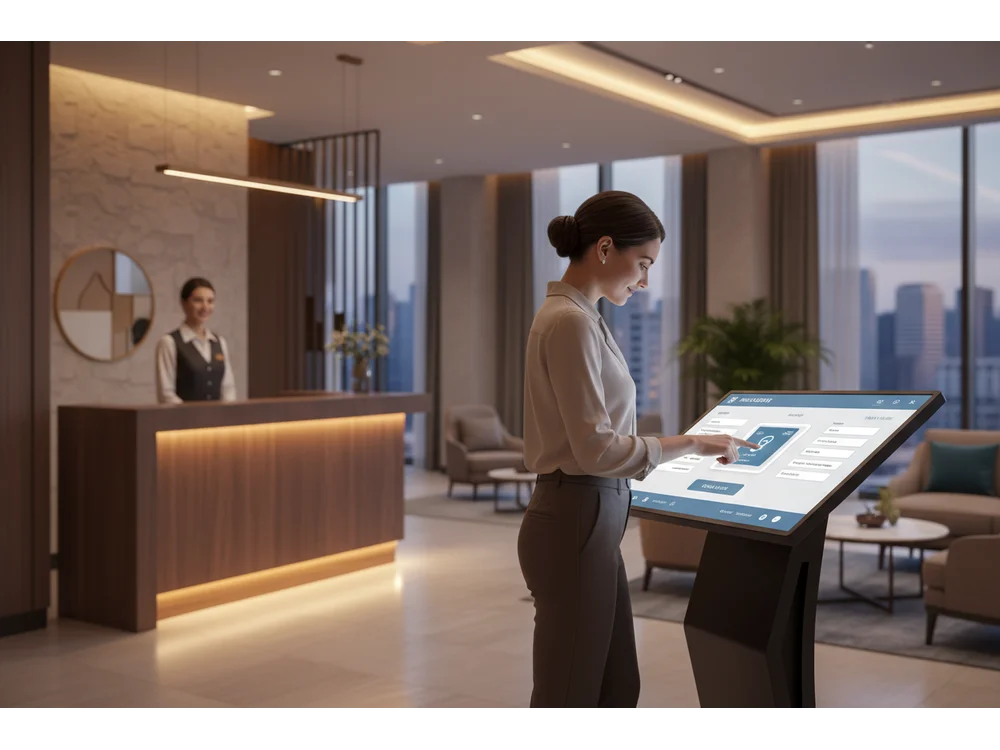The Evolution of Touch Screen Technology: Revolutionizing Modern Interaction
Touch screen technology has become one of the most influential innovations of the digital era. What began as a novel concept in early computing has now evolved into a universal interface that shapes how people interact with devices. Whether it’s a smartphone, tablet, interactive kiosk, or AI Smartboard, the ability to navigate with just a touch has made technology more accessible and engaging for users of all ages.
Today, touch screen solutions are not only seen in personal gadgets but are also redefining how organizations, schools, and businesses operate. In Malaysia, the rapid adoption of interactive displays reflects the nation’s growing commitment to digital transformation — and companies like Arvia Solutions are at the forefront of this movement.
1. Understanding Touch Screen Technology
A touch screen combines both display and input capabilities in a single surface. By detecting physical contact through sensors, it allows users to interact directly with what they see on the screen — no mouse, keyboard, or controller needed.
There are several major types of interactive screen technologies:
-
Resistive: Works through pressure between two flexible layers; often used in ATMs or older POS systems.
-
Capacitive: Uses the electrical conductivity of the human body, widely found in smartphones and tablets.
-
Infrared (IR): Employs light sensors around the screen edges, common in large interactive panels like smartboards.
-
Optical: Uses cameras and light sensors to detect touch points, providing high accuracy and multi-touch support.
Each type serves different purposes depending on precision, durability, and cost. For example, IR touch screens are ideal for classrooms and meeting rooms due to their superior accuracy and minimal maintenance.
2. The Widespread Use of Touch Screens Across Industries
Touch screen technology has made a significant impact across diverse industries:
-
Education: Interactive smartboards enable teachers to conduct dynamic, engaging lessons. Students can draw, annotate, and participate directly on the screen, promoting active learning.
-
Corporate: Businesses use touch displays for meetings, video conferencing, and digital collaboration. With AI tools like Meeting Summary and Camera Tracking, professionals can present efficiently and capture every discussion point.
-
Retail and Hospitality: Self-service kiosks simplify transactions, reduce waiting times, and enhance customer experiences.
-
Healthcare: Medical professionals rely on touch interfaces for quick patient data entry and system navigation without the need for physical keyboards.
-
Public Services: Government offices and transportation hubs use touch screen kiosks for self-check-in, wayfinding, and information centers.
This versatility highlights the adaptability and importance of touch screen technology in driving smart city and digital nation initiatives.
3. Key Advantages of Touch Screen Technology
The rise of smart touch system technology can be attributed to its numerous benefits:
-
Ease of Use: Touch-based interaction feels natural and requires little to no training.
-
Faster Operation: Tasks can be executed instantly, improving productivity.
-
Space Saving: Combines display and control into one sleek interface.
-
Aesthetically Modern: Adds a contemporary look to corporate and educational environments.
-
Durability: High-quality touch screens are built to withstand long hours of use in public spaces.
For organizations, this means not only better efficiency but also an improved brand image — showing that they value innovation and customer convenience.
4. The Rise of Large Interactive Displays and Kiosks
Beyond handheld devices, large-format touch screens are transforming collaboration and communication. Products like Arvia’s interactive smartboards, touch screen kiosks, and LED display systems bring advanced features to classrooms, boardrooms, and exhibitions.
Arvia’s touch screen solutions, such as the ARV600 AI Smartboard, feature multi-touch capability, built-in cameras, and microphones — enabling seamless hybrid meetings and distance learning. The technology encourages team participation, brainstorming, and interactive presentations without needing multiple devices.
Touch screen kiosks, on the other hand, offer self-service convenience for customers. They can be used in shopping malls, hospitals, and government buildings for information directories, ticketing, or queue management systems.
5. Touch Screen in Malaysia’s Digital Transformation Journey
Malaysia’s movement toward smart education, smart office, and smart city ecosystems relies heavily on interactive technology. The government’s continuous efforts in digitalization encourage schools, universities, and enterprises to adopt touch-based solutions for better accessibility and engagement.
Arvia Solutions contributes to this national vision by supplying touch-enabled technology across educational institutions, government departments, and corporate organizations. With years of experience and local expertise, Arvia ensures each installation meets Malaysian standards for quality and performance.
6. The Future of Touch Screen Technology
The future of touch screen innovation goes beyond mere touch. With AI integration, voice control, and gesture recognition, next-generation systems will make digital interaction even more intuitive. Imagine operating screens without touching them — simply by waving or using eye movement recognition.
Additionally, haptic feedback and 3D touch simulation will bring a new level of realism to virtual experiences. Combined with cloud and IoT technologies, interactive display will soon become the central hub for communication, automation, and control across homes and workplaces.
7. Why Businesses Should Invest in Touch Screen Solutions
In a fast-moving digital economy, user engagement is key. Businesses that integrate touch technology stand out by offering an interactive, modern experience. Whether it’s through digital signage, product catalogs, or presentation screens, touch-enabled displays make information more accessible and visually appealing.
Moreover, these systems reduce manpower dependency, improve accuracy, and enhance customer satisfaction. As part of a digital transformation strategy, adopting touch screens reflects a company’s readiness for the future.
Conclusion
From smartphones to interactive displays, touch screen technology continues to redefine how humans connect with information. Its intuitive nature, versatility, and seamless integration make it one of the most transformative tools of the modern era.
In Malaysia, Arvia Solutions remains a trusted provider of touch screen smartboards, kiosks, and digital signage systems that empower education, business, and government sectors. As we move toward a smarter, connected future, one thing is certain — the power of touch will continue to lead innovation.







